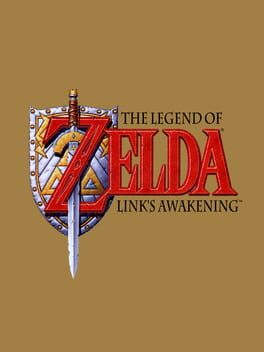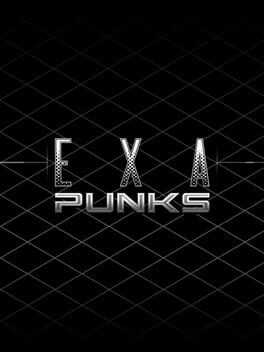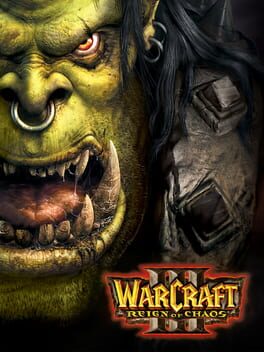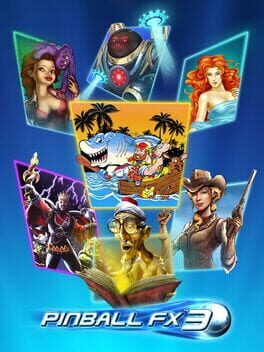Klaustrix
BACKER
Bio
Game designer from London, UK. I like games that use the medium of gaming to give us unique and interesting experiences.
Gameplay over graphics.
Quality over quantity.
Game designer from London, UK. I like games that use the medium of gaming to give us unique and interesting experiences.
Gameplay over graphics.
Quality over quantity.
Badges

1 Years of Service
Being part of the Backloggd community for 1 year
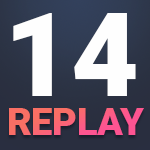
Replay '14
Participated in the 2014 Replay Event

Popular
Gained 15+ followers

On Schedule
Journaled games once a day for a week straight

Well Written
Gained 10+ likes on a single review

GOTY '23
Participated in the 2023 Game of the Year Event

Loved
Gained 100+ total review likes

Best Friends
Become mutual friends with at least 3 others

Donor
Liked 50+ reviews / lists

Pinged
Mentioned by another user

Gone Gold
Received 5+ likes on a review while featured on the front page

Noticed
Gained 3+ followers

N00b
Played 100+ games

Liked
Gained 10+ total review likes

Busy Day
Journaled 5+ games in a single day
Favorite Games
239
Total Games Played
032
Played in 2024
1524
Games Backloggd
Recently Played See More
Recently Reviewed See More
The ideal follow up to an already impressive game that adds a slew of new content, new gameplay, new challenges, and a heaping helping of new stories to explore the aftermath of of WC3's events.
TFT is great example of how a dev team can really go to town once they've mastered the tools. This game expands on all the mechanics and gameplay, introduces new armies, units, and items, and then dumps 4 new campaigns on top of all that. Through these stories we explore the fates of Illidan Stormrage and the Naga, Arthas and the Lich King, the Blood Elves, Sylvanas and the dreadlords, and then finally the bonus 'Founding of Durotar' campaign. It's a gigantic amount of content and if you've played WoW this really sets the stage for how things start out in vanilla through to Wrath.
The stories are well written and have the same great character writing as the base game but uniquely TFT is an epilogue for the antagonists of WC3, exploring how they recover from the finale. Each of the four stories adds all new depth to the various factions and fills in some gaps left from the core game's narrative. I found it dragged a bit in the undead campaign (the starting gameplay is still very base-building focused) but thankfully the devs keep it fresh by exploring new game modes and scenarios with stealth, dungeon exploration, capture the flag, king of the hill, naval missions, aerial missions, you name it. Not to mention a variety of secret missions to discover. This variety definitely gives TFT a whole different feeling from the base game while building on what's come before.
For the new armies, I was a disappointed to find the blood elves are a reskin of humans and elves combined - especially as the demon's army is right there but you never seem to get access to it. The Naga at least are an all new snakeman race that are powerful, slow, and expensive with an aztec theme. They have the ability to cross shallow water giving them some unique movement, but every army has something new to play with between new units and buildings. There's also a host of new hero characters that the story is told through.
The final campaign - The Founding of Durotar - is a 3 part story built from inter-linked sandbox areas that make the game play more akin to Diablo. It actually feels like playing a proto world of warcraft as you venture into the wilds, kill mob packs along the way, do quests, kill bosses with raid-style mechanics, and collect equipment to enhance your heroes. While this gives the game a whole new feeling it's also jarringly slower paced and they aren't afraid to kill you since your heroes now instantly respawn at a resurrection stone. This often leads to fairly drawn out battles of attrition as you throw your units at problems until its solved. It creates a very different tone from WC3 and it's hard to say if it's 'better', so your mileage may vary.
Overall, WC3 built a fantastic engine and TFT is very much the devs using that engine as a playground to experiment with. You can see much of the WoW DNA taking shape through the lean into open world sandbox design alongside the story beats setting up the world politics for a more deep and nuanced setting. If you liked the base game this is an large extra serving of that with all kinds of new ways to enjoy it - but you may not enjoy every new flavour.
TFT is great example of how a dev team can really go to town once they've mastered the tools. This game expands on all the mechanics and gameplay, introduces new armies, units, and items, and then dumps 4 new campaigns on top of all that. Through these stories we explore the fates of Illidan Stormrage and the Naga, Arthas and the Lich King, the Blood Elves, Sylvanas and the dreadlords, and then finally the bonus 'Founding of Durotar' campaign. It's a gigantic amount of content and if you've played WoW this really sets the stage for how things start out in vanilla through to Wrath.
The stories are well written and have the same great character writing as the base game but uniquely TFT is an epilogue for the antagonists of WC3, exploring how they recover from the finale. Each of the four stories adds all new depth to the various factions and fills in some gaps left from the core game's narrative. I found it dragged a bit in the undead campaign (the starting gameplay is still very base-building focused) but thankfully the devs keep it fresh by exploring new game modes and scenarios with stealth, dungeon exploration, capture the flag, king of the hill, naval missions, aerial missions, you name it. Not to mention a variety of secret missions to discover. This variety definitely gives TFT a whole different feeling from the base game while building on what's come before.
For the new armies, I was a disappointed to find the blood elves are a reskin of humans and elves combined - especially as the demon's army is right there but you never seem to get access to it. The Naga at least are an all new snakeman race that are powerful, slow, and expensive with an aztec theme. They have the ability to cross shallow water giving them some unique movement, but every army has something new to play with between new units and buildings. There's also a host of new hero characters that the story is told through.
The final campaign - The Founding of Durotar - is a 3 part story built from inter-linked sandbox areas that make the game play more akin to Diablo. It actually feels like playing a proto world of warcraft as you venture into the wilds, kill mob packs along the way, do quests, kill bosses with raid-style mechanics, and collect equipment to enhance your heroes. While this gives the game a whole new feeling it's also jarringly slower paced and they aren't afraid to kill you since your heroes now instantly respawn at a resurrection stone. This often leads to fairly drawn out battles of attrition as you throw your units at problems until its solved. It creates a very different tone from WC3 and it's hard to say if it's 'better', so your mileage may vary.
Overall, WC3 built a fantastic engine and TFT is very much the devs using that engine as a playground to experiment with. You can see much of the WoW DNA taking shape through the lean into open world sandbox design alongside the story beats setting up the world politics for a more deep and nuanced setting. If you liked the base game this is an large extra serving of that with all kinds of new ways to enjoy it - but you may not enjoy every new flavour.
Exapunks takes the broader mechanics of assembly coding and turns it into a puzzle game. At the same time it weaves together a cute cyberpunk narrative that has you hacking body parts, government servers, and nuclear reactors.
While most programming games tend to have you running command lines and work at the front end of computing, Exapunks goes into the metal and has you programming little robots to perform functions akin to assembly instructions. The concept is clever and the unique approach works well. The visuals are sharp and have a cassette futurism feel that looks wonderful, and the music has that classic Zachtronics 'music to think to' vibe.
For the moment to moment gameplay each mission has a clear objective and you program one or more bots to manipulate files and data using 4 registers with different limitations. It's these limitations that encourage you to find creative and compact programming solutions. You're scored based on the size of the code, number of bots, and how your code takes to solve the problem. This can give you clear insights, such as when you see that most people made the code just a little more efficient encouraging you to go back and optimise.
The gameplay is mixed with a pair of real PDF 'zines which teach you the finer details of how tech works in this world and gradually introduces more complex ways you can instruct the bots. The multimedia approach is fun and adds to the immersion, though you have to be somewhat bought in to sit down and read what is basically an series of instruction manual snipets.
Personally Exapunks does a lot that I enjoy, the story is a bit cliche but it's a fun excuse for the interesting and varied challenges thrown at you - the different themes and secrets hidden add some nice depth. Zachsoft games can be intimidating but this is a good place for beginners to start and if you're an experienced programmer you're still going to learn something about optimisation. Smart, stylish, and good fun.
While most programming games tend to have you running command lines and work at the front end of computing, Exapunks goes into the metal and has you programming little robots to perform functions akin to assembly instructions. The concept is clever and the unique approach works well. The visuals are sharp and have a cassette futurism feel that looks wonderful, and the music has that classic Zachtronics 'music to think to' vibe.
For the moment to moment gameplay each mission has a clear objective and you program one or more bots to manipulate files and data using 4 registers with different limitations. It's these limitations that encourage you to find creative and compact programming solutions. You're scored based on the size of the code, number of bots, and how your code takes to solve the problem. This can give you clear insights, such as when you see that most people made the code just a little more efficient encouraging you to go back and optimise.
The gameplay is mixed with a pair of real PDF 'zines which teach you the finer details of how tech works in this world and gradually introduces more complex ways you can instruct the bots. The multimedia approach is fun and adds to the immersion, though you have to be somewhat bought in to sit down and read what is basically an series of instruction manual snipets.
Personally Exapunks does a lot that I enjoy, the story is a bit cliche but it's a fun excuse for the interesting and varied challenges thrown at you - the different themes and secrets hidden add some nice depth. Zachsoft games can be intimidating but this is a good place for beginners to start and if you're an experienced programmer you're still going to learn something about optimisation. Smart, stylish, and good fun.
A simpler time, a beautifully well rounded RTS, and the rise of hero-based games. It's such a dramatic contrast seeing where the Warcraft series came from compared to where it has ended up. But if there's one thing WC3 shares with its developer (at the time) it's that both have a lot of character.
The visuals of WC3 are surprisingly toyetic, the cartoonish scale and proportion of everything feels like real miniatures running around a table top. Its this miniature design and the animated style that gives the game its signature look, one which hasn't gone out of style albeit more refined these days. There's a lot of charm in these old chunky polygon character models though, heads flapping almost like muppets. This contrasts with the serious tone of the story and voice acting that takes the toys and does something deeper with them. Having played WoW I was surprised how much more I cared about various characters after finishing their stories. Thrall's quest is so compelling that I ended up with a whole different perspective on him now I know his past, and his struggles to be the most diplomatic of the faction leaders.
The story follows the wartorn races of Azeroth as they brace for a prophesised doom. This introduces us to the Humans, Orcs, Undead, and Elf races each with their own campaigns to tell their part of the story. Each army has unique units, mechanics, and tactics for gameplay plus it's own quirks, but they're all structured very similarly with buildings generally serving the same purpose (upgrades, infantry, aerial units etc.). Still the differences are enough to make each of the armies feel distinct and switching between them in the campaign keeps gameplay fresh.
The mission variety is great as you go from base building scenarios to mini adventures that feel closer to diablo. The base building tends to teach you the various army's units and how to make use of them and their upgrades, tying in as a kind of long form tutorial for the multiplayer end game. The hero and unit missions meanwhile feel like small D&D scenarios, tightly designed and without much room for error. The heightened stakes give it a very different play feel that compliments the story nicely letting the game explore more nuanced and miniature scale story beats.
The hero characters leading each mission add another layer of complexity. Most RTS games have their leader units but Warcraft made them larger than life characters, added the RPG element to them, and gave them an inventory. This would give rise to hero-genre games such as hero shooters and MOBAs, but you can feel that DNA residing in WC3 as you play the linear missions without bases, leading small parties rather than just cheering on warbands as they clash.
Warcraft 3 doesn't feel like a company establishing the set piece that will launch their gaming empire and cement the Warcraft brand. It just feels like a group of devs making stuff up, doing what looks cool, and having fun with it. From a time when the company was more humble and wholesome, before they turned into the mechanical conglomerate they are today churning out monetisation. The game feels rough and scribbled, lacking that corporate polish we're so used to now days, making it feel all the more hand-wrought. This again contrasts with their stunning cinematic animations proving that Warcraft works at high and low quality, large and small scale, because it has great core writing, design, and faithfulness to its world building while offering nothing more but vague allusions to what the setting holds. There's a charming potential to that. You can see why people would have been hyped to see the whole world realised via WoW. Overall a fun and charming game that tells an exciting story and leaves you with an amazing online multiplayer.
The visuals of WC3 are surprisingly toyetic, the cartoonish scale and proportion of everything feels like real miniatures running around a table top. Its this miniature design and the animated style that gives the game its signature look, one which hasn't gone out of style albeit more refined these days. There's a lot of charm in these old chunky polygon character models though, heads flapping almost like muppets. This contrasts with the serious tone of the story and voice acting that takes the toys and does something deeper with them. Having played WoW I was surprised how much more I cared about various characters after finishing their stories. Thrall's quest is so compelling that I ended up with a whole different perspective on him now I know his past, and his struggles to be the most diplomatic of the faction leaders.
The story follows the wartorn races of Azeroth as they brace for a prophesised doom. This introduces us to the Humans, Orcs, Undead, and Elf races each with their own campaigns to tell their part of the story. Each army has unique units, mechanics, and tactics for gameplay plus it's own quirks, but they're all structured very similarly with buildings generally serving the same purpose (upgrades, infantry, aerial units etc.). Still the differences are enough to make each of the armies feel distinct and switching between them in the campaign keeps gameplay fresh.
The mission variety is great as you go from base building scenarios to mini adventures that feel closer to diablo. The base building tends to teach you the various army's units and how to make use of them and their upgrades, tying in as a kind of long form tutorial for the multiplayer end game. The hero and unit missions meanwhile feel like small D&D scenarios, tightly designed and without much room for error. The heightened stakes give it a very different play feel that compliments the story nicely letting the game explore more nuanced and miniature scale story beats.
The hero characters leading each mission add another layer of complexity. Most RTS games have their leader units but Warcraft made them larger than life characters, added the RPG element to them, and gave them an inventory. This would give rise to hero-genre games such as hero shooters and MOBAs, but you can feel that DNA residing in WC3 as you play the linear missions without bases, leading small parties rather than just cheering on warbands as they clash.
Warcraft 3 doesn't feel like a company establishing the set piece that will launch their gaming empire and cement the Warcraft brand. It just feels like a group of devs making stuff up, doing what looks cool, and having fun with it. From a time when the company was more humble and wholesome, before they turned into the mechanical conglomerate they are today churning out monetisation. The game feels rough and scribbled, lacking that corporate polish we're so used to now days, making it feel all the more hand-wrought. This again contrasts with their stunning cinematic animations proving that Warcraft works at high and low quality, large and small scale, because it has great core writing, design, and faithfulness to its world building while offering nothing more but vague allusions to what the setting holds. There's a charming potential to that. You can see why people would have been hyped to see the whole world realised via WoW. Overall a fun and charming game that tells an exciting story and leaves you with an amazing online multiplayer.




